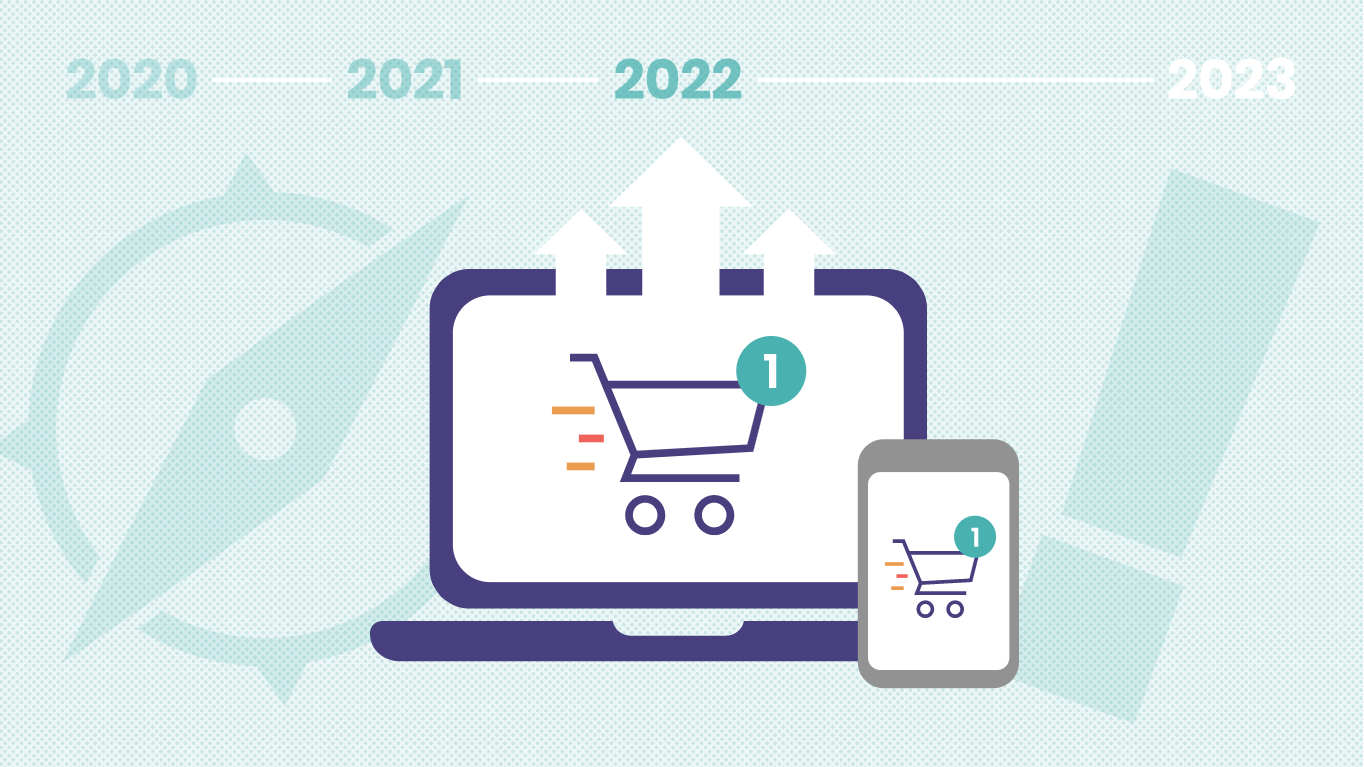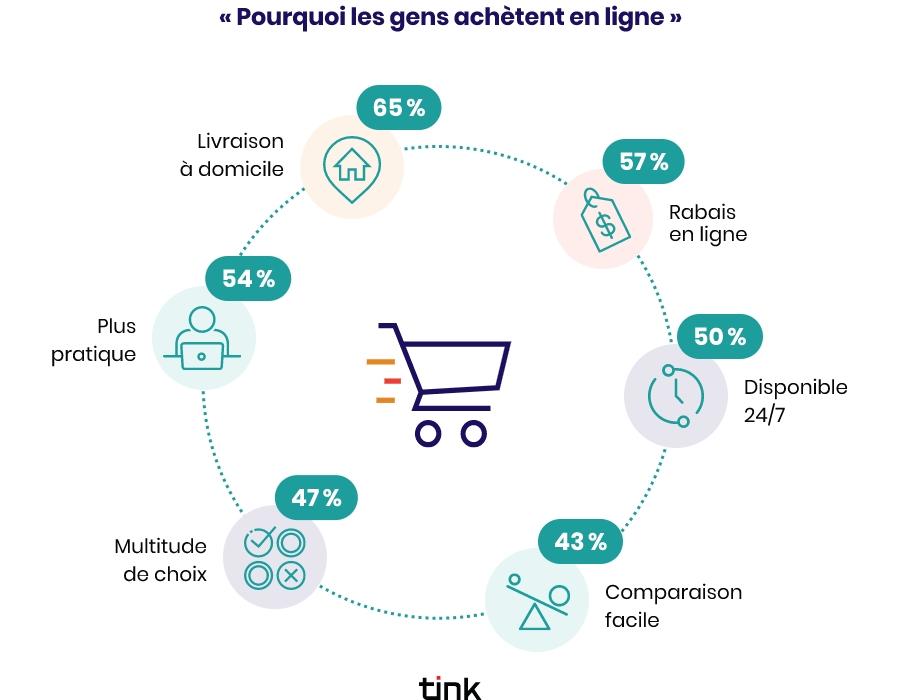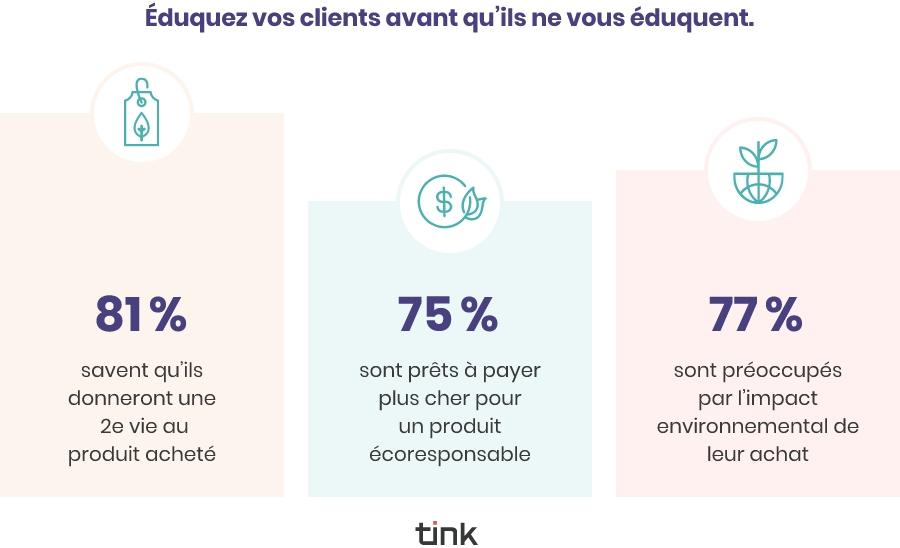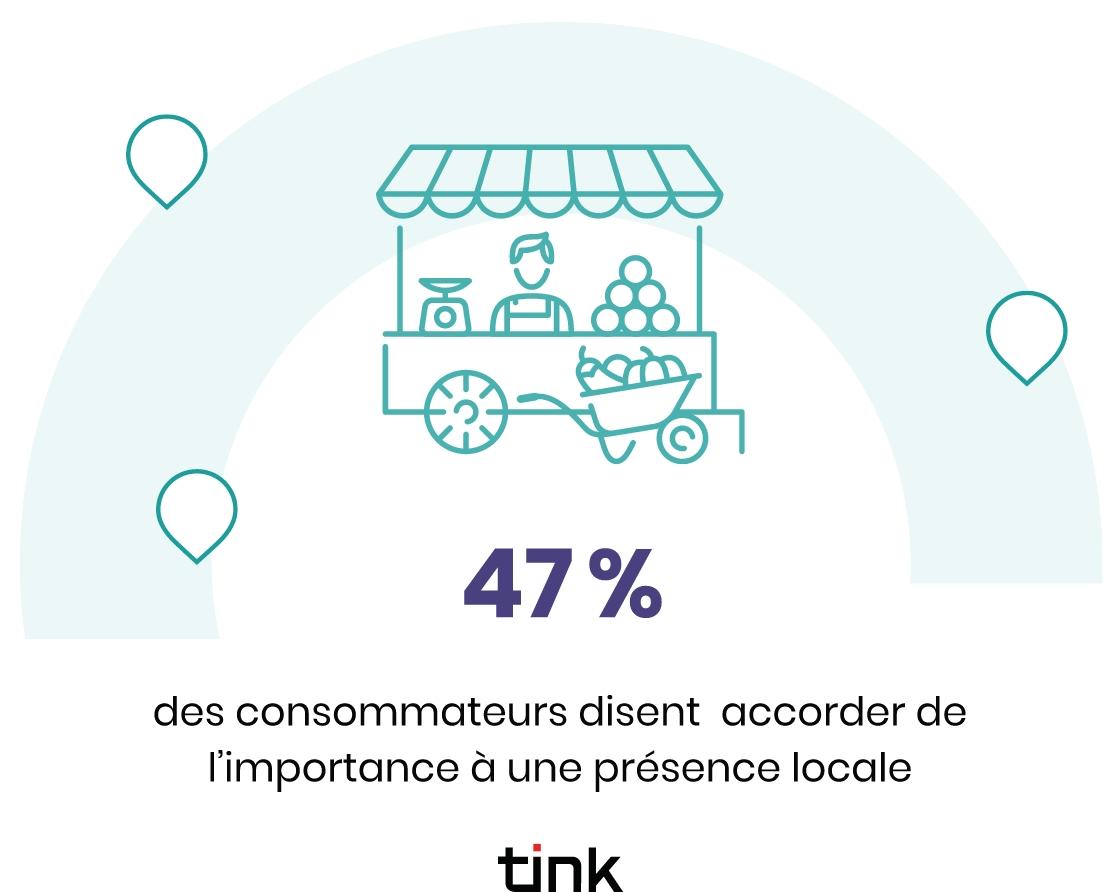What can we expect from post-pandemic e-commerce?

Selling online has never been more relevant and, paradoxically, it has never been more difficult. The operational landscape is changing, and so are consumer behaviours. As destabilizing events unfold on a global scale, some businesses are changing the rules of the game through innovation or by expanding their market reach. Soon, social commerce will occupy an important share of the market, and commercial mobile applications could make a comeback.
Supply chains are plagued by disruptions, but online shopping is booming
First of all, let’s take a brief look at e-commerce’s recent history. The last few years have been tough on merchants, to say the least. As businesses were forced to transform to survive the pandemic, the number of online competitors kept growing and challenges were exacerbated by supply chain disruptions. Currently, businesses are having to expand their offerings and operational strategies to account for delivery costs that are four times higher on average than they were in 2020.
We’re also seeing that the pandemic and health conditions have changed our shopping habits and behaviours, and that making online purchases is becoming standard for most people. In 2021, the record growth of online sales was characterized by the following (among others):
- The influx of D2C (direct to consumer) brands that are only available online, bypassing retailers by default;
- People buying items online that were traditionally purchased in-store. These include groceries, pharmaceuticals, and hardware—to name just a few;
- The emergence of small- and medium-sized businesses that are getting into the game by running simple, accessible e-commerce platforms, further increasing the number of online sellers;

Consumers are shopping online, but they’re also coming into stores
Like me, you’ve probably been aware of the impact of our consumption habits on the environment for quite some time, but our online shopping behaviours have only started to change recently. Online shoppers are increasingly concerned about the environment, and we’re starting to care more about the ecological impact of production and delivery, not to mention what happens to a product at the end of its life cycle..

This reality highlights how important it is for brands to be always evolving in order to meet these expectations with transparency—especially before the consumer turns their back on them for good. I could also sum it up this way: it’s better to educate your customers than to wait for them to educate you.
Shopping “for fun” (i.e., to kill time) is something that people do online, but it’s also making a comeback in stores, especially among Gen Z. In fact, more than 80% of Americans belonging to this generation say they prefer going to stores to discover new products, and 50% also do so to disconnect. Even though some consumers have gotten used to shopping online, the lifting of health measures may lead certain shoppers to adopt new, hybrid behaviours. Slightly more than half of consumers say they plan on visiting a store before they make a purchase online, and just as many say they often complete an online transaction after they visit a store in person. In addition, more available storefronts and lower rental costs could cause new businesses to see the light of day.

What to expect from e-commerce over the next few months
First, here are a few things of which I am certain:
If you were able to successfully build your brand and establish relationships during the pandemic, well done! If not, this should be an area of focus. Developing a direct relationship with your customers (by creating a newsletter, for example) is still relevant, especially now that third-party cookies have crumbled. What’s more, we already know that online brands are willing to invest more to be ranked by search engines, either through organic referencing (SEO) or paid advertising (SEA in Europe and SEM in North America). Here’s what we can expect to keep seeing in the months and years to come: converting your customers into subscribers, slowly earning their loyalty by providing them with interesting tips and content through your channels, and optimizing the purchasing experience to make it more seamless.
Online, customers are up to four times more likely to make a purchase from a brand that shares their values, such as eco-friendliness, support for local businesses, social openness, transparency, ethics, etc. In other words, being upfront about your values and doing so with authenticity is key. Moreover, the most successful businesses will be those that consistently choose to focus on brand identity and lead nurturing.
Finally, what’s in store for the future and upcoming transformations?
- The migration of online sales to social commerce is a trend that’s here to stay. Cultivating a strong social network and building a community around your offering will remain relevant strategies when it comes to making sales. As we all know, it’s still possible to target a person’s behaviour on social media platforms. Shopify is already jumping on this trend with the launch of Linkpop, a platform that combines the social approach of influencers and content creators with a shopping experience that’s so seamlessly integrated, it’s easy to forget a commercial transaction is involved.
- Businesses that already have a fulfillment and delivery strategy for their orders will be ahead of the competition. Delivery issues, time frames, and environmental impact will play an important role in the future of e-commerce, where consumers will be concerned about flexibility and the ability to return items even more easily.
- In the mobile realm, a surge in high-value brands that are moving away from retail stores and resellers and focusing on D2C sales—like Nike is currently doing—may very well trigger the rebirth of commercial mobile applications. These apps will make it possible to reach consumers directly, get to know them, follow them, and nurture their loyalty.
Digital transaction systems will obviously need to be put in place for all products and services, despite any particularities and limitations you will probably have to contend with. If keeping up with these changes ever feels overwhelming, just remember that we’re always here for you!
To react or write to François: fboissonneault@tink.ca
You have a project ? Visit our ecommerce service page.
Sources :
- The future of commerce report 2022 https://www.shopify.com/research/future-of-commerce
- Vision 2021 A Trends Report by Future Commerce https://pages.futurecommerce.fm/vision-2021-trends-report-by-future-commerce-and-vertex
